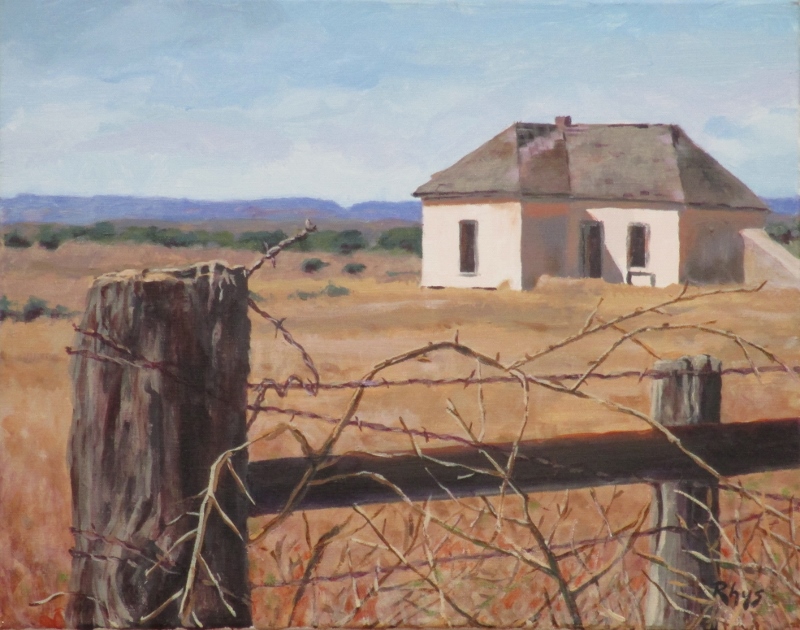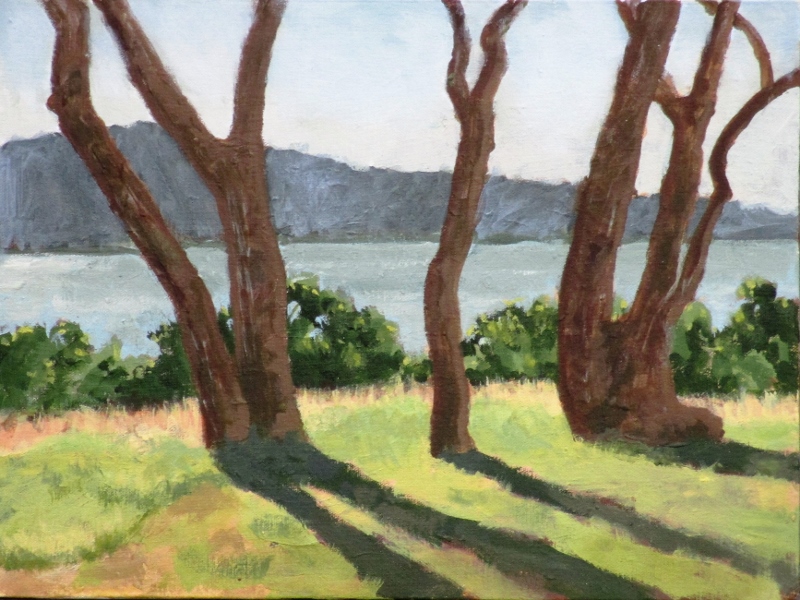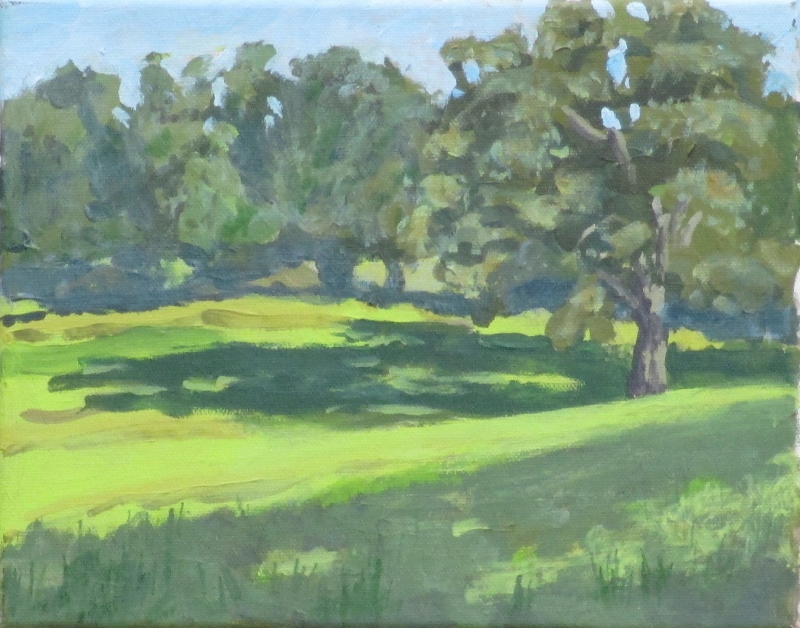A profound and unexpected change has snuck up on me over the last 30 or 40 years.
I have a large and diverse personal library, with a considerable segment of art books, some of which date back to the late 60’s. In fact, my library is too large. My collection overflows a room of wall-to-wall, floor-to-ceiling bookshelves, as well as shelves in my studio, in the bedroom and in the hall; and still boxes full of books sit waiting to find homes. Several weeks ago I undertook to thin out my library.
As a young man, on several occasions, I spent what was for me a considerable fortune for large books full of color prints of the paintings of Matisse, or Picasso, Modigliani, or Cezanne—to name a very few. I cherished those books. Their contents excited me and inspired me for decades and I often found myself channeling Modigliani in the portrait of a friend, or Picasso in a nude, Matisse in an interior. Oh my how I loved those images!
And now, trimming my library, I found myself contemplating the unthinkable as I looked into my old art books.
The first shock came as I pored over one of my early favorites, Picasso’s Women, flipping through the pages expecting soon to get past these spontaneous and somewhat frivolous pictograms of woman painted onto what appear to be large pieces of industrial scrap iron. All the metal shapes have the same contour, all are painted white with black markings and, most distressing, none are particularly beautiful or exciting. They are just examples of Picasso giving Picasso permission to play with anything.
We’ve been through a lot since Picasso made those figures. They have lost their impact, possibly because today so much is permitted, and not just in the arts. And permission was, I believe, their principal message fifty years ago.
I browsed on. Pablo Picasso made some stunningly beautiful portraits of women. I long for the day I can return to the Metropolitan Museum of Art in New York City and marvel at his Woman in White. But this book contained none of those delectable images; it was all shock and permission, long ago granted and forgotten. The only one I could still enjoy was a collage and charcoal portrait of Jacqueline on the cover.
This is not to negate the significance of Picasso’s work. The permissions and abstractions he advocated are a major factor in where we are today. But the style, at least as it appears in this book, no longer moves me.
I next picked up a portfolio of Cézanne prints. Sharp disappointment. I had revered Cézanne, not only for his innovations in resuscitating pictorial depth after Impressionism, but even just for his look. Again, still recognizing his significance in the history of art, and still acknowledging that I find many of his pieces exquisite, I have to admit that the plates in this book struck me as clunky and clumsy, even to the point of suggesting that the critics of old were right, that these late 19th century artists just could not paint and were doing the best they could.
In the year I turned 19 and took a year out of college, and during the next two summers, I worked in the design studio of a large manufacturer of vending machines. I am grateful to this day of the lessons I learned at the feet of my boss, Walter Koch, even though some of the lessons were then repugnant to me. One day I presented a design to him that I felt was functional and attractive, but he sent me back to my drafting table to jazz it up and put in some rather garish embellishments. When I objected, he said, “Planned obsolescence! We want the design to be striking this year, but we want customers to get tired of it and come back for a new design next year.”
I was already aware of the concept. Every year there was great excitement over the new line of automobiles. Cars even a year old looked dated. When in the early sixties automakers flattened out the great fins of the late fifties, I wondered what they could possibly come up with next. And fashions in dress certainly went through great changes from year to year. But now, talking with Walter, I had to realize that these changes were thoroughly calculated, even to the point of the deliberate creation of an unpleasant appearance. Designers were not trying to improve on previous designs; they were looking to make something that would date itself in a very short time.
Don’t get me wrong. I am not suggesting that my artist heroes of old were intentionally dating themselves, but that is what happens, and especially to the more revolutionary styles. Hence, the horns of a dilemma:
An artist can create a unique, shocking and innovative body of work. Most of us who do this will pass out of fashion eventually but who cares? We’ll be dead.
Or…
We can choose to paint from our plain old everyday prosaic hearts. Unlike the pyrotechnic, our work will neither illuminate the entire world nor fizzle out. It will just keep good company.
I am completely okay with being an artist whose best works are moving or exciting but not earth shakers. I believe that my paintings deserve to hang in nice homes, even if not in museums—and that’s what I really want anyway. I am a modest painter. I have permission to be a modest painter.
Picasso says so.
I have a large and diverse personal library, with a considerable segment of art books, some of which date back to the late 60’s. In fact, my library is too large. My collection overflows a room of wall-to-wall, floor-to-ceiling bookshelves, as well as shelves in my studio, in the bedroom and in the hall; and still boxes full of books sit waiting to find homes. Several weeks ago I undertook to thin out my library.
As a young man, on several occasions, I spent what was for me a considerable fortune for large books full of color prints of the paintings of Matisse, or Picasso, Modigliani, or Cezanne—to name a very few. I cherished those books. Their contents excited me and inspired me for decades and I often found myself channeling Modigliani in the portrait of a friend, or Picasso in a nude, Matisse in an interior. Oh my how I loved those images!
And now, trimming my library, I found myself contemplating the unthinkable as I looked into my old art books.
The first shock came as I pored over one of my early favorites, Picasso’s Women, flipping through the pages expecting soon to get past these spontaneous and somewhat frivolous pictograms of woman painted onto what appear to be large pieces of industrial scrap iron. All the metal shapes have the same contour, all are painted white with black markings and, most distressing, none are particularly beautiful or exciting. They are just examples of Picasso giving Picasso permission to play with anything.
We’ve been through a lot since Picasso made those figures. They have lost their impact, possibly because today so much is permitted, and not just in the arts. And permission was, I believe, their principal message fifty years ago.
I browsed on. Pablo Picasso made some stunningly beautiful portraits of women. I long for the day I can return to the Metropolitan Museum of Art in New York City and marvel at his Woman in White. But this book contained none of those delectable images; it was all shock and permission, long ago granted and forgotten. The only one I could still enjoy was a collage and charcoal portrait of Jacqueline on the cover.
This is not to negate the significance of Picasso’s work. The permissions and abstractions he advocated are a major factor in where we are today. But the style, at least as it appears in this book, no longer moves me.
I next picked up a portfolio of Cézanne prints. Sharp disappointment. I had revered Cézanne, not only for his innovations in resuscitating pictorial depth after Impressionism, but even just for his look. Again, still recognizing his significance in the history of art, and still acknowledging that I find many of his pieces exquisite, I have to admit that the plates in this book struck me as clunky and clumsy, even to the point of suggesting that the critics of old were right, that these late 19th century artists just could not paint and were doing the best they could.
In the year I turned 19 and took a year out of college, and during the next two summers, I worked in the design studio of a large manufacturer of vending machines. I am grateful to this day of the lessons I learned at the feet of my boss, Walter Koch, even though some of the lessons were then repugnant to me. One day I presented a design to him that I felt was functional and attractive, but he sent me back to my drafting table to jazz it up and put in some rather garish embellishments. When I objected, he said, “Planned obsolescence! We want the design to be striking this year, but we want customers to get tired of it and come back for a new design next year.”
I was already aware of the concept. Every year there was great excitement over the new line of automobiles. Cars even a year old looked dated. When in the early sixties automakers flattened out the great fins of the late fifties, I wondered what they could possibly come up with next. And fashions in dress certainly went through great changes from year to year. But now, talking with Walter, I had to realize that these changes were thoroughly calculated, even to the point of the deliberate creation of an unpleasant appearance. Designers were not trying to improve on previous designs; they were looking to make something that would date itself in a very short time.
Don’t get me wrong. I am not suggesting that my artist heroes of old were intentionally dating themselves, but that is what happens, and especially to the more revolutionary styles. Hence, the horns of a dilemma:
An artist can create a unique, shocking and innovative body of work. Most of us who do this will pass out of fashion eventually but who cares? We’ll be dead.
Or…
We can choose to paint from our plain old everyday prosaic hearts. Unlike the pyrotechnic, our work will neither illuminate the entire world nor fizzle out. It will just keep good company.
I am completely okay with being an artist whose best works are moving or exciting but not earth shakers. I believe that my paintings deserve to hang in nice homes, even if not in museums—and that’s what I really want anyway. I am a modest painter. I have permission to be a modest painter.
Picasso says so.



 RSS Feed
RSS Feed